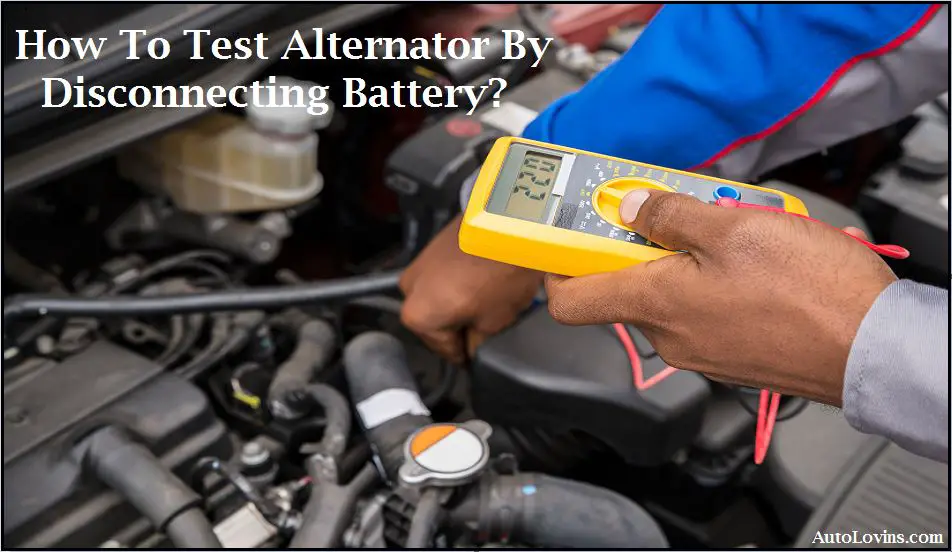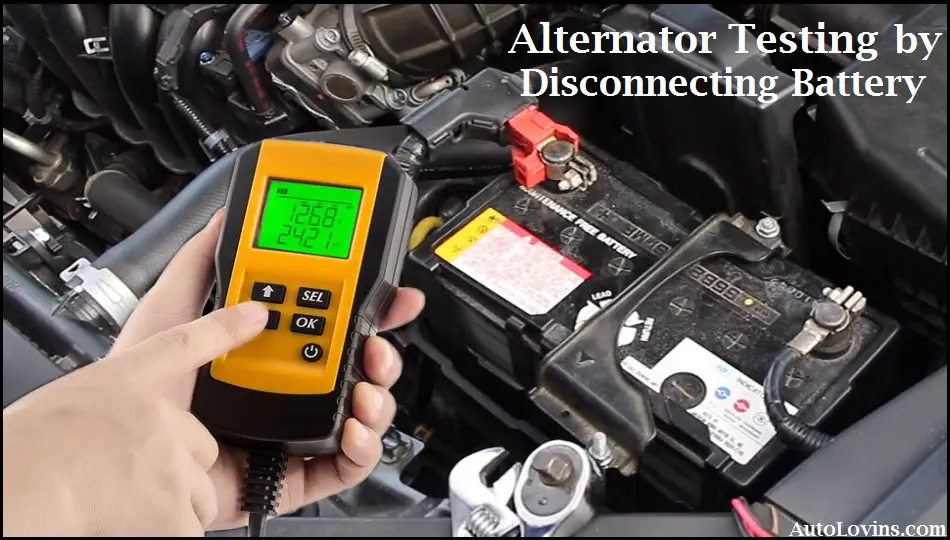
In a vehicle, the alternator plays a significant role to make it work. You can think of it as the mind of the car. It not only uses the engine power to run but also charges the battery for later usage. So, if the alternator somehow breaks down midway on a trip, knowing some methods like how to test the alternator by disconnecting the battery can save you from troubles.
A damaged alternator means your car isn’t going to work properly, which is a big hassle to face in your daily commuting life. There are many other ways to test if the alternator is working or not. Many people have tried to do it by disconnecting the battery for a quick result.
Table of Contents
- 1 5 Common Symptoms of a Bad Alternator
- 2 Warning Indicator Light
- 3 Dim Headlights
- 4 Dead Battery
- 5 Problematic Electrical Accessories
- 6 Weird Smell & Sound
- 7 Frequent Stalling
- 8 Common Symptoms of a Failing Alternator (Video Review)
- 9 Testing the Alternator by Disconnecting Battery
- 10 Why This Method Is Not Safe?
- 11 Alternative Methods that are comparatively safe
- 12 Final Thoughts:
5 Common Symptoms of a Bad Alternator
Before you start testing the alternator, make sure to check some signs for confirmation. Because there is always a possibility that the problem is in some other parts. You wouldn’t want to waste your time without getting any early warning hints because it will definitely exhibit signs of deterioration.
Some common symptoms of a faulty alternator are
-
Warning Indicator Light
The first and the most basic indication of a problematic alternator is the blinking of the warning indicator light. You may become confused about the light at first. Just check the label if it is saying GEN on ALT. If the light goes on, the alternator is surely malfunctioning.
Related Post: Top Rated Ultrasonic Carburetor Cleaner Review
-
Dim Headlights
The headlights on your vehicle may start flickering as well. When you start the car using the battery, the alternator provides its power to keep the light on constantly. If the light glows properly, the alternator is working fine. But if the headlight is dim or keeps flickering, your alternator is struggling to power up the battery.
-
Dead Battery
The performance of the battery also is a crucial sign of a bad alternator. If the battery frequently keeps going dead and needs to be charged every few weeks, the chances of a failed alternator behind this issue is a big one. It gets affected if the car charging system isn’t done properly, resulting in a drained battery. A bad alternator can ruin a good battery overnight.
-
Problematic Electrical Accessories
An alternator is a powerhouse that makes sure all the electrical elements of your car work properly. If tools like radio, air conditioner, dashboard lights, and power window are not functioning smoothly, you should check if the alternator is dysfunctional.
-
Weird Smell & Sound
Strange sounds and smells can be another sign that your alternator is not in a favorable state. However, these can be signs caused by different problems rather than the alternator as well. But if you find some other symptoms that sync with the alternator issues, then you should be alert. Hot-wire smell or burnt rubber smell can be a result of overheating or excess friction in the alternator.
-
Frequent Stalling
When the broken alternator stops charging the battery, the battery won’t have enough power to start the car. As a result, you may face problems starting the car or frequent stalling. This can also happen when the spark plug doesn’t get the required electricity supply to run the vehicle.
If you see more than one symptom of this list happening with your wheels, don’t wait up and do a quick test to identify the problem.
Common Symptoms of a Failing Alternator (Video Review)
Testing the Alternator by Disconnecting Battery

So, how to test alternator by disconnecting battery? The answer is pretty simple and quick. You can follow some simple steps to check the alternator status.
- First, park the car in a public yet safe place. You can also use a driveway for this purpose. If you have any pets, then keep them at a safe range.
- Open up the car hood. Check twice to see if the car is in a stable position.
- Now go back to the driver’s seat.
- Start the car engine. At this point, you may have to face some issues due to the damaged alternator.
- Get yourself out of that driver’s seat once the car starts running.
- Now go back to your car battery. If you find any corrosion or dirt around the battery area, remove it.
- Disconnect the positive terminal of the car battery while it is still running.
- Observe if the car engine is running like earlier.
If your car keeps running upon unplugging the battery, it means the alternator is in good condition. The problem might lie in some other part of your vehicle. But if the car stops running, then the alternator configuration is not okay. A faulty alternator won’t be able to power the engine.
Why This Method Is Not Safe?
The role of an alternator is to provide power to the engine when you remove the battery out from the running engine. The battery of the car acts as a buffer that maintains the electricity flow of the motor system. If somehow the battery gets disconnected, the alternator works as the backup and generates high power electricity.
The high voltage energy then flows through the car’s electrical parts and increases the temperature. Due to the overheating, thousands of dollars of electrical tools can get damaged. In addition, excess power can cause car components to burst out. Hence, if you don’t want to spend a chunk of money on replacements, try to avoid this testing method.
Alternative Methods that are comparatively safe
Rather than disconnecting the battery, you can use some other methods that are comparatively safe and more reliable. You can use a voltmeter and follow these simple steps for this.
- Use a multimeter and turn on the engine while all the accessories remain switched off.
- With the voltmeter, take the reading between the battery terminals.
- Now, switch on the electrical components, and take reading the same way.
The alternator is all-right if the first reading is 14V. It is still good if the 2nd reading shows 13V. Any other reading different than the mentioned ones is the sign of a defective alternator. Don’t forget to put your vehicle in a safe position during this test.
Final Thoughts:
Now that you know how to test alternator by disconnecting battery, you should also understand why this method is not recommended by most vehicle owners. No matter how much of an expert you are, first, you must think about the impact and safety measures. If you think your alternator has gone bad, best to take a professional opinion for further steps.
Related Post:
